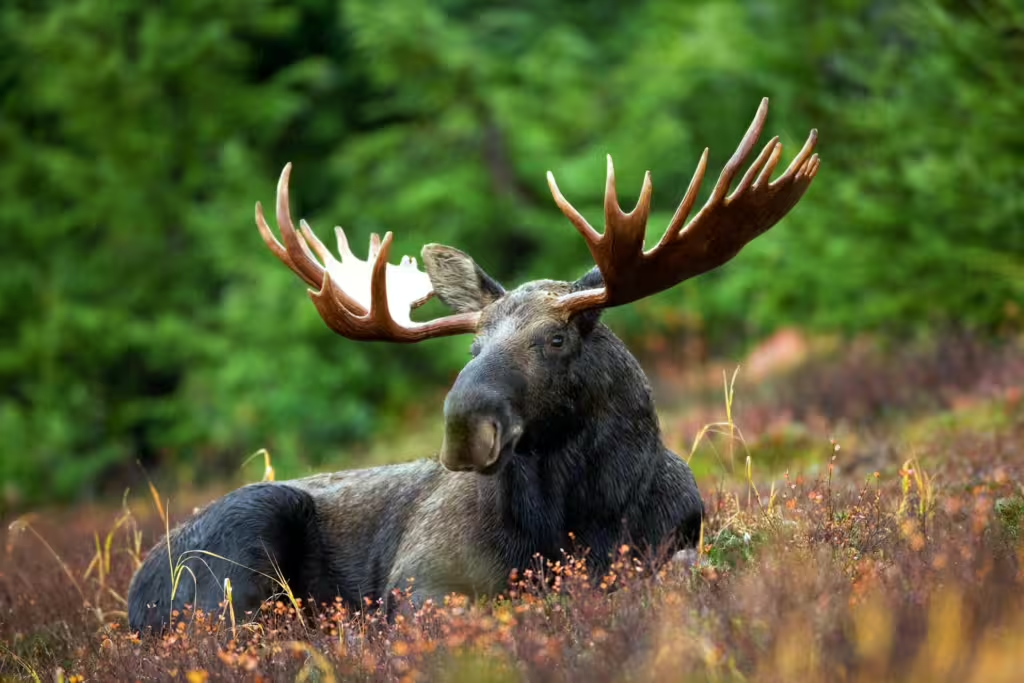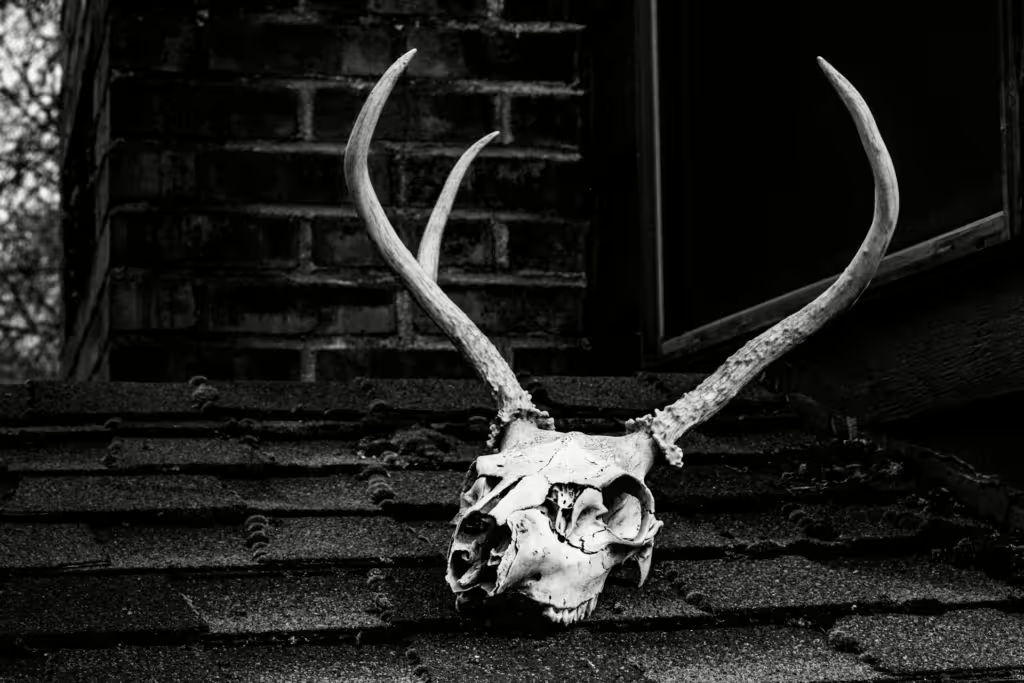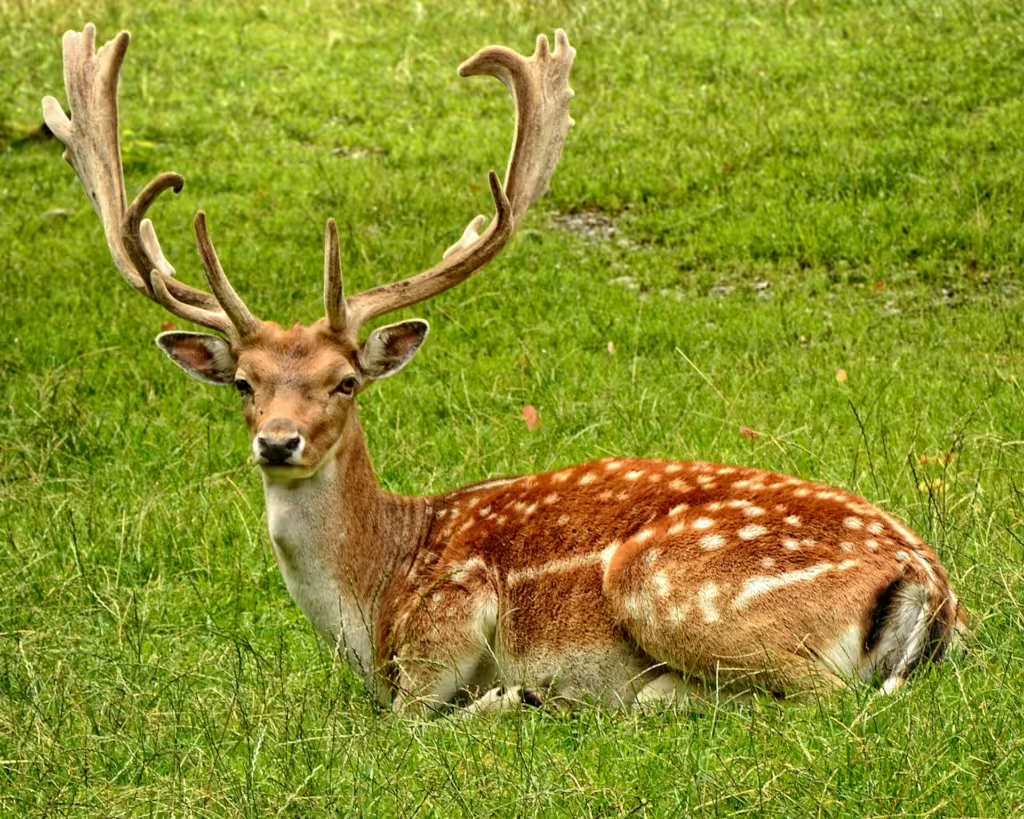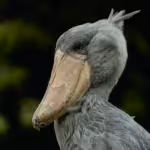The sight of a pair of deer antlers adorning a mantle or fabricated into a chandelier of sorts, conjures up certain feelings in human beings. We feel a sense of wonder but also one of sadness. The idea that these animals may have had to die to become a trophy is disquieting to some, though it conjures up a sense of exhilaration in others. For those latter few, the instinct likely harkens back to our days as primitive hunters; days when deer, elk, moose, and other grazing ungulates were among our most hunted and revered prey.
It isn’t just that animals with antlers are a link to a past we have all-but-forgotten either, antlers are among the most striking natural structures found in the animal kingdom, and they are shapes thus for good reason. The bony, often branched appendages of deer, moose, caribou, and elk are primarily associated with members of the that family, otherwise known as the Cervidae. Indeed, cervids are the only animal group that possesses this unique adaptation. But what exactly are antlers for, biologically speaking?
In this article, we will answer that very question. Along the way, we shall explore the remarkable adaptations antlered animals possess, as well as discussing the ecological niche they represent. We will also examine some of the challenges they face. Finally, we will delve deep into the myths and folklore that have surrounded these creatures for centuries.
Adaptations and Roles of Antlers
The main roles that antlers play in a biological capacity are actually pretty simple, but this makes sense, as deer are not what one would call complex creatures in terms of their behavior; for the most part anyway. Antlers are used to attract mates and fend off rivals and since they only appear on the male of the species, they are put to that purpose quite often; annually, in fact. We make this point because antlers are not like horns, which are made of bone or keratin and part of an animal’s skull for life. Antlers are unique in that, while made of bone, they are shed and regrown annually.
This process is greatly influenced by hormonal changes and seasonal shifts but regardless of circumstances, antlers remain one of the fastest-growing tissues in the animal kingdom. In the summer months, an animal’s antlers develop at an astonishing rate, and this must happen, as they are generally needed for when the breeding season begins. The bigger a buck’s “rack” the more stronger he appears, genetically-speaking, and therefore the more desirable he is to female does. In many ways, a male’s antlers serve as a status symbol within the herd, playing a crucial role in hierarchy and mating rights.
Many cervids also use their antlers to defend themselves, their offspring, and their fellow herdmates from predators. They can be deadly if they wind up impaled on a mountain lion, and can be shed or broken with minimal risk to the animal. Still other animals use their antlers to dig through the snow in search of food. As for humans, our fascination with antlers goes back to our most primitive belief systems, yet even today, antlers serve as symbols of power, renewal, and mysticism in many human cultures.
The following are some unique adaptations of antlered animals:

Moose (Alces alces)
Moose are the largest members of the deer family and bull moose, or males, can grow massive, palmate antlers. Some bull moose have antlers reaching six feet from point to point. This makes sense of course, as moose are also one of the largest herbivorous animals in the Western hemisphere. A male moose can weigh upwards of 1500 pounds, while a female moose comes close at around 1100 maximum. That is a lot of animal no matter how you turn and twist, and it’s one that you wouldn’t want to have charging at you…so keep your distance if you happen upon one in the wild.
A moose’ antlers are used to establish dominance during the animal’s mating season. This is known as a rut and during that rut, male moose will fend off competitors and dazzle the females with their enormous antlers. Moose thrive in boreal forests and live and wade in wetlands, using their long legs and powerful bodies to carry through deep snow and dense marshes with equal aplomb. Like most animals of their size, moose are constantly grazing in search of food to power their enormous bodies.
What many people don’t realize is that a moose’s antlers also help enhance its hearing, acting as sound reflectors that amplify incoming noises. Aside from mating season, moose are solitary animals, often wandering vast territories, and their large size makes them formidable opponents against any bears or brave wolf that might try to prey upon them.
Elk (Cervus canadensis)
Falling in at a close second, are the Elk. These extra-large deer have long, branching antlers that can weigh up to 40 pounds on their own; that’s not accounting for the enormous size of the elk itself. An elk’s antlers are not only weapons but serve as tools of intimidation against other males and would-be predators. During their seasonal rut, males engage in loud bugling calls to assert dominance over other bulls. This behavior also helps them to attract female elk.
Unlike moose, which lead a very solitary existence, elk are more likely to form large groups or herds. These family groups offer the herbivores protection against predators like mountain lions and wolves. Like many herd animals, elk are highly social, moving in these large herds as they migrate seasonally across the North American continent. Male elks also use their antlers in sparring matches where the bulls lock them together in displays of strength. Interestingly enough, an elk’s antler growth is directly influenced by diet and genetics, with the most well-fed individuals growing significantly larger antlers than those who are swimming in the shallower end of the gene pool.
Caribou (Rangifer tarandus)
Every school child knows what a caribou is, though they probably recognize it as a reindeer. This cold-dwelling cervid is unique among deer species because both males and females grow antlers. Why would reindeer present such an adaptation? Well, it has a lot to do with where they live. Antlers help caribou to scrape away snow so that they can access lichen and other food sources during the harsh Arctic winters of their favored habitats.
Caribou sort of double-up on this by having an equally incredible sense of smell, which aids them in finding food beneath more than a few layers of snow. Unlike other deer species, a reindeer’s antlers have a more asymmetrical shape, which is makes them better suited to digging and defense. In addition, reindeer also undertake some of the longest migrations of any land mammal, covering thousands of miles every single year in search of food, breeding grounds, and shelter from the cold. Their thick fur and specialized hooves allow them to traverse icy landscapes with ease, making them well-suited for even the most extreme environments on the planet.
White-Tailed Deer (Odocoileus virginianus)
Perhaps the most common and widespread cervid on this list, the white-tailed deer is also the most adaptable. This adaptability allows the white-tail deer to survive in many different environments and climates, from dense forests to suburban areas. White-tailed deer have relatively smaller antlers compared to moose and elk, but they use them to great effect both in sparring matches during the rut and to defend themselves from predators.
A white-tail’s antler size varies depending on age, nutrition, and genetics, like most cervids. These deer are also highly agile, using their strong legs and keen senses to evade predators and even human hunters. Indeed, unlike some larger deer species who are mightily huge and powerful, white-tailed deer rely more on speed and agility than sheer strength. In most cases, it is their quick reflexes that help them avoid danger, not their ability to brawl.
Fallow Deer (Dama dama)
Fallow deer are a lesser-known species of deer, most recognizable for their broad, flattened antlers, which are similar in shape to those of a much smaller moose. Unlike most of the animals we have mentioned thus far, these cervids are not native to North America but were first found in Europe. That said, the fallow deer has been introduced to many parts of the world. The males, or bucks, use their antlers to establish territories and compete for mates in elaborate displays of strength. Fallow deer also have a distinctive gait and exhibit unique coloration patterns, which makes them very unlike their American counterparts. As with most deer, the fallow’s antlers serve a crucial role in both mating displays and defense against rivals. Fallow deer are highly adaptable and can thrive in a wide range of diverse habitats, including woodlands, grasslands, and parklands.
Population Control and Management

In an age where conservation is such a hot-button topic, it’s unusual to see human beings actively trying to hunt animals on purpose. The thing is, the populations of antlered animals are often subject to natural and human-imposed controls; for good reason. Without proper management, many deer populations would grow out of control, leading to habitat degradation, increased vehicle collisions, and higher risks of disease transmission to humans, farm animals, and other wild critters. Overpopulation can also result in food shortages, causing malnutrition and increased competition for resources among cervids.
Natural Predation
Large carnivores such as wolves, mountain lions, and bears are all quite fond of cervids. In fact, most of these apex predators actually play a vital role in maintaining balanced populations of deer and elk. By preying on weaker individuals, predators like these help ensure the continued health of the overall population.
Hunting Regulations
Many governments regulate hunting seasons in an effort to prevent overpopulation, ensure sustainable herd sizes, and keep the hunting enthusiasts happy. These regulations include tags and licenses that are issued based on scientific assessments of population dynamics. In most places, ethical hunting is used to help control populations while contributing to conservation funding through licensing fees.
Disease Management
Sadly, there are many diseases that can go through cervid populations that put everyone in danger. Chronic wasting disease (CWD) is a significant concern for deer and elk populations; but it is also a big deal for other mammals that can contract it. Wildlife agencies are constantly monitoring and managing the spread of this fatal neurological disease through controlled hunting and culling programs, but it is a constant battle. Other diseases, such as bovine tuberculosis, can also spread among herds, making monitoring efforts even more crucial.
Mythology and Folklore Surrounding Antlers
Throughout history, antlers have been revered as symbols of strength, renewal, and connection to nature for many of the world’s peoples. Native American and Celtic legends often use deer or antlered iconography to represent various gods, nature spirits, and the like. Indeed, various cultures have attributed mystical properties to antlers in this way, believing they hold the power of regeneration and wisdom. Many of these same legends speak of antlers as conduits of spiritual energy, symbolizing a connection between the earthly and divine realms.

True Investigator Says…
As you can see, antlered animals are not only ostentatious, they are extraordinary examples of nature’s unique ingenuity. Deer, moose, caribou, and elk all play essential roles in their respective ecosystems and have become cultural touchstones for human beings since we first. began painting them on cave walls. Though many species face modern threats such as habitat loss, climate change, and disease, ongoing conservation efforts have been put in place to help ensure their survival. Even those efforts that seek to cull populations of these animals are done so with the utmost care and concern for the well-being of the deer themselves.
Beyond their ecological importance they signify, antlers continue to hold symbolic meaning in mythology and folklore, connecting people to the natural world in profound and uplifting ways. Thus, by fostering sustainable practices and respecting wildlife, we can preserve these magnificent creatures and ensure they continue to inspire countless generations of humans to come; just as they did our earliest ancestors.
Discover more from TrueInvestigator
Subscribe to get the latest posts sent to your email.


